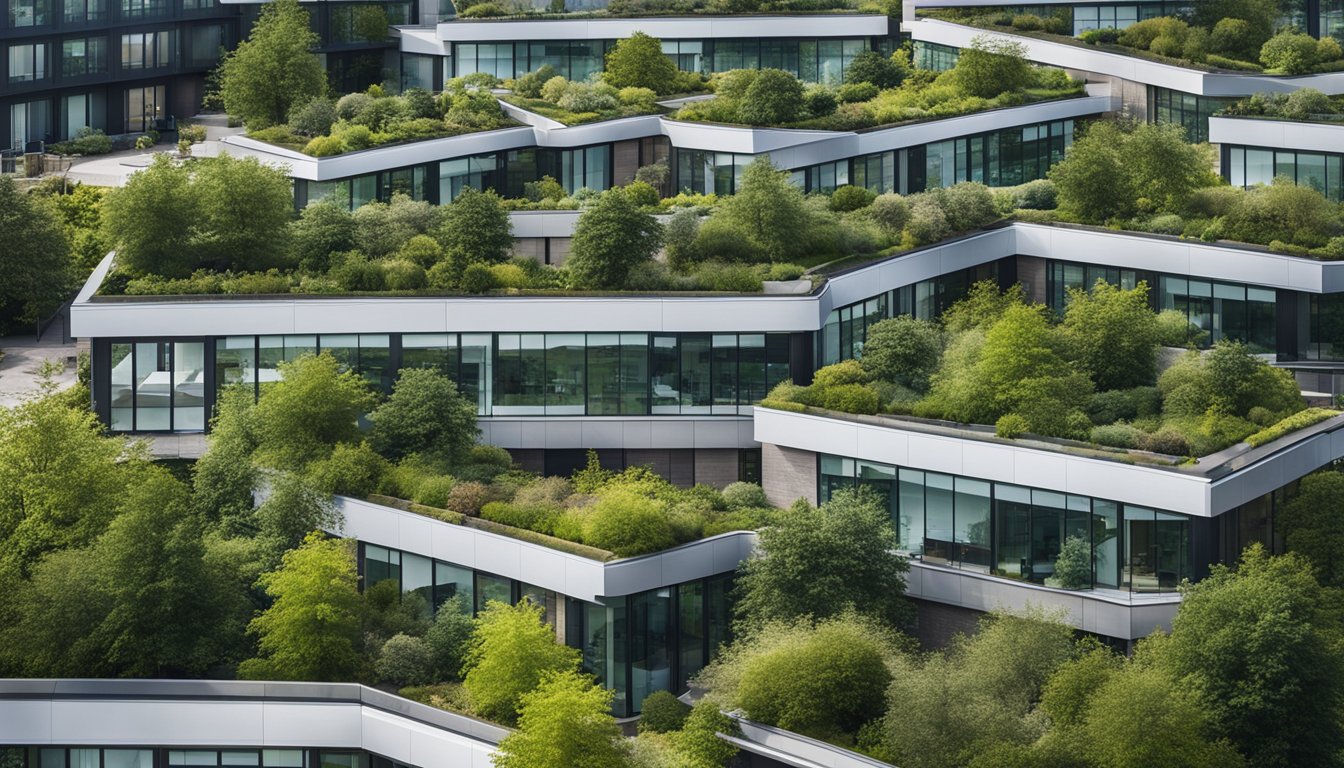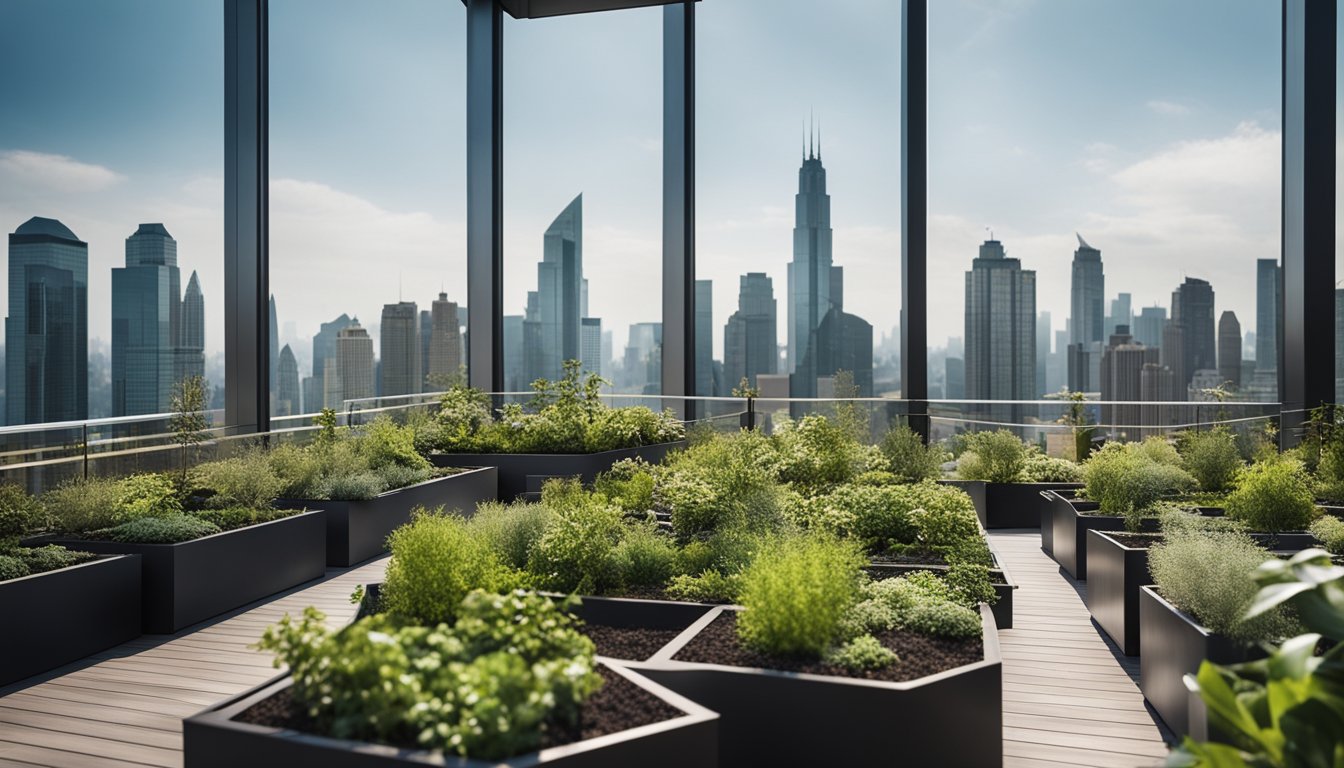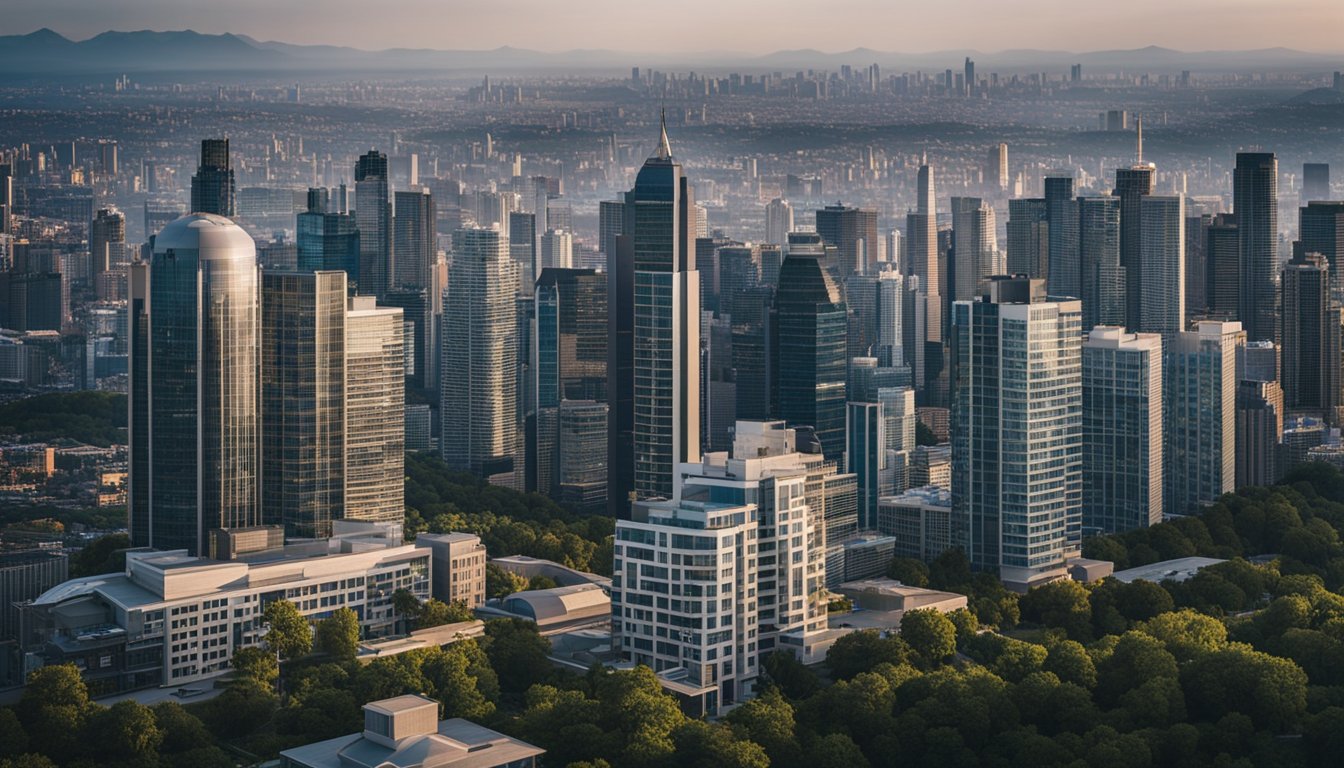Late updated: 11 Jan 2025 08:01
Written by: Oliver Bennett
Modern Roof Design Ideas For UK Cities: Enhancing Urban Living
Exploring the evolution of architecture, we find that modern roofing designs in UK cities blend aesthetics, functionality, and sustainability. By adapting to urban environments, these creative roof styles not only enhance the visual appeal of buildings but also meet energy efficiency and environmental standards. Homeowners are increasingly opting for innovative roof designs that offer durability while integrating eco-friendly elements.

In the UK, the variety of modern roofing ideas includes options like green roofs, energy-efficient materials, and minimalist aesthetics. These designs ensure that buildings resonate with contemporary styles while serving practical functions. From embracing sleek lines to implementing natural elements, modern roofs in urban areas are redefining how we perceive residential and commercial landscapes.
Choosing the right roofing design is pivotal in addressing the unique challenges and opportunities presented by city environments. It's vital to consider factors such as climate, urban zoning laws, and long-term maintenance. As we dive deeper into this topic, we aim to guide you through the exciting possibilities that modern roofing designs offer, making your decision informed and inspired.
Key Takeaways
- Modern roofs combine aesthetics and sustainability.
- Urban designs focus on energy efficiency and style.
- Consider climate and regulations in roofing choices.
Innovative Techniques in Modern Roof Design
In the world of modern roof design, innovative techniques are revolutionising the way we think about sustainability and efficiency. Exploring solutions such as solar technology integration, cutting-edge materials, and eco-friendly systems will provide valuable insights.
Integrating Solar Technology for Energy Efficiency
Our adoption of solar technology in roofing design is driving energy efficiency to new heights. The integration of solar panels and solar shingles has become increasingly common in modern homes. These features not only provide renewable energy but also enhance the architectural aesthetics of a building.
Smart roofs, equipped with panels, can be tied into home automation systems. This allows for seamless energy management and optimises electricity use within the home. The transition to more efficient, energy-generating roofs is both a design choice and a step toward sustainability. As the technology evolves, we're seeing reduced costs and improved installation processes, making solar roofing more accessible to homeowners.
Advancements in Modern Roofing Materials
The development of innovative materials is at the forefront of modern roofing. Metal roofing, particularly steel, offers durability and stylish options for contemporary designs. These materials are valued for their resilience and low maintenance needs. In urban areas, the use of materials that can withstand harsh weather is particularly beneficial.
Sustainable materials have also gained popularity, contributing to the overall eco-friendliness of modern home designs. Products like recycled shingles and the latest polymers promise longevity and a reduced environmental footprint. Different textures and colours cater to diverse styles, allowing architects and homeowners more flexibility in their designs.
Creating Eco-Friendly Roofing Systems
Eco-friendly roofing systems are a key component of sustainable urban design. Green roofs, covered with vegetation, are growing in popularity, especially in city environments. They help manage stormwater, provide insulation, and improve air quality. This type of roofing also offers an appealing aesthetic that integrates well with urban landscapes.
Additionally, flat roofs are often transformed into living spaces, enhancing the usability of a rooftop area. The choice of these eco-friendly designs not only aligns with environmental priorities but also supports a trend towards sustainable living. As these systems gain traction, their benefits to urban ecosystems become increasingly evident.
Benefits and Considerations in UK Urban Roofing

In UK urban settings, modern roof designs offer multiple advantages. They help in optimising natural light and ventilation, ensure a balance between aesthetic harmony and practicality, and focus on durability and maintenance efficiency. Each aspect is essential for enhancing both the functionality and appearance of residential buildings.
Optimising Natural Light and Ventilation
In densely populated cities, rooftops can significantly contribute to a home's natural lighting and ventilation. Modern designs often incorporate elements like roof windows, skylights, and even strategically placed roof panels. These features allow sunlight to flood interior spaces, reducing the need for artificial lighting and enhancing energy efficiency.
Furthermore, proper ventilation is crucial in urban homes. It prevents moisture build-up and helps regulate indoor temperatures. With flat roofs, the integration of advanced ventilation systems can facilitate better airflow, improving comfort while also maintaining air quality.
Achieving Architectural Harmony and Practicality
Urban homes benefit from roof styles that match and enhance contemporary architecture. UK cities often blend various architectural styles, and modern roofs need to align with both traditional and contemporary designs. Whether it's through sleek metal roofing or vibrant green roofs, these solutions elevate the architectural features of a house, boosting curb appeal.
Practicality is another important consideration. Modern roof designs are expected to offer both aesthetic value and functional support. Lightweight materials and modular systems enhance ease of installation while maintaining robust structural integrity. Roofs should support the building's architecture without compromising durability or design.
Ensuring Durability and Maintenance Efficiency
Durability is a key factor in regions with variable weather patterns. Urban roofing must withstand elements including wind, rain, and, occasionally, snow. Insulation technologies play a significant role in maintaining year-round comfort and energy efficiency. For example, well-insulated roofs can decrease energy costs by reducing heat loss.
Maintenance efficiency ensures that upkeep is manageable and cost-effective. Many modern roofing materials, such as high-quality metal and composite solutions, offer long lifespans with minimal maintenance requirements. Efficient water drainage is crucial, especially for flat roofs, to prevent leaks and structural damage. This reduces potential repair costs and enhances the roof's lifespan significantly.
Frequently Asked Questions

Modern roofing in UK cities involves selecting durable and stylish materials that withstand local weather conditions. Effective use of space on rooftops and terraces is crucial, especially in densely populated areas.
What are the most popular materials used for modern roofing in UK urban areas?
In urban UK settings, roofing materials such as slate, clay tiles, and metal are frequently chosen for their durability and aesthetic appeal. Modern synthetic options, including rubber and fibreglass, are also prevalent due to their ability to mimic traditional materials while offering enhanced weather resistance.
What design considerations are crucial for small urban rooftops in the UK?
Small urban rooftops necessitate thoughtful design to maximise usability and comfort. Essential considerations include structural integrity, effective drainage systems, and optimum insulation to enhance energy efficiency. Lightweight materials that can endure harsh weather conditions also play a pivotal role.
How can one maximise space on a rooftop terrace in densely populated UK cities?
To maximise rooftop terrace space, integrating multifunctional furniture and vertical gardening techniques can be effective. These strategies allow for a blend of aesthetic appeal and practical space use. Portable partitions can create zones for different activities, enhancing the terrace’s versatility.
What are innovative ideas for integrating roof balconies in contemporary UK architecture?
Integrating roof balconies in modern architecture involves seamless design elements, such as glass balustrades and green roofing extensions. These features not only enhance visual appeal by increasing natural light and greenery but also contribute to energy savings and urban biodiversity.
Which roofing style provides the best durability and stability for buildings in the UK climate?
Pitched roofs, often covered with slate or tiles, are widely regarded for their durability and stability against the UK climate’s diverse challenges. These roofing styles help in effective water runoff, reducing the risk of leaks and structural damage.
How does one achieve an economical yet modern roof design for urban homes in the UK?
For economical and modern roof designs, we recommend using cost-effective materials such as asphalt shingles and exploring recycled options. Incorporating simple design elements like skylights or solar panels can provide a modern touch while improving energy efficiency, making them practical for urban dwellings.
